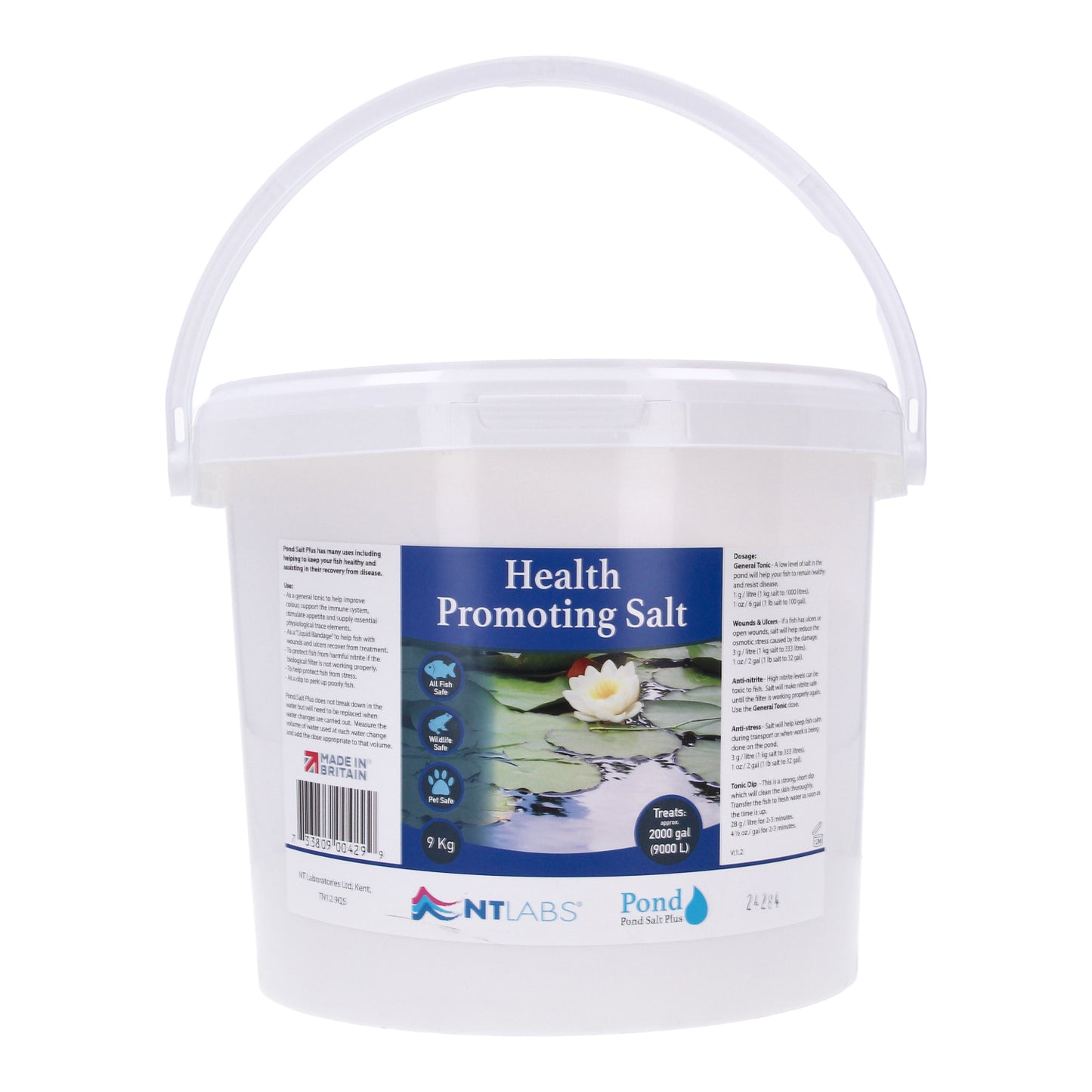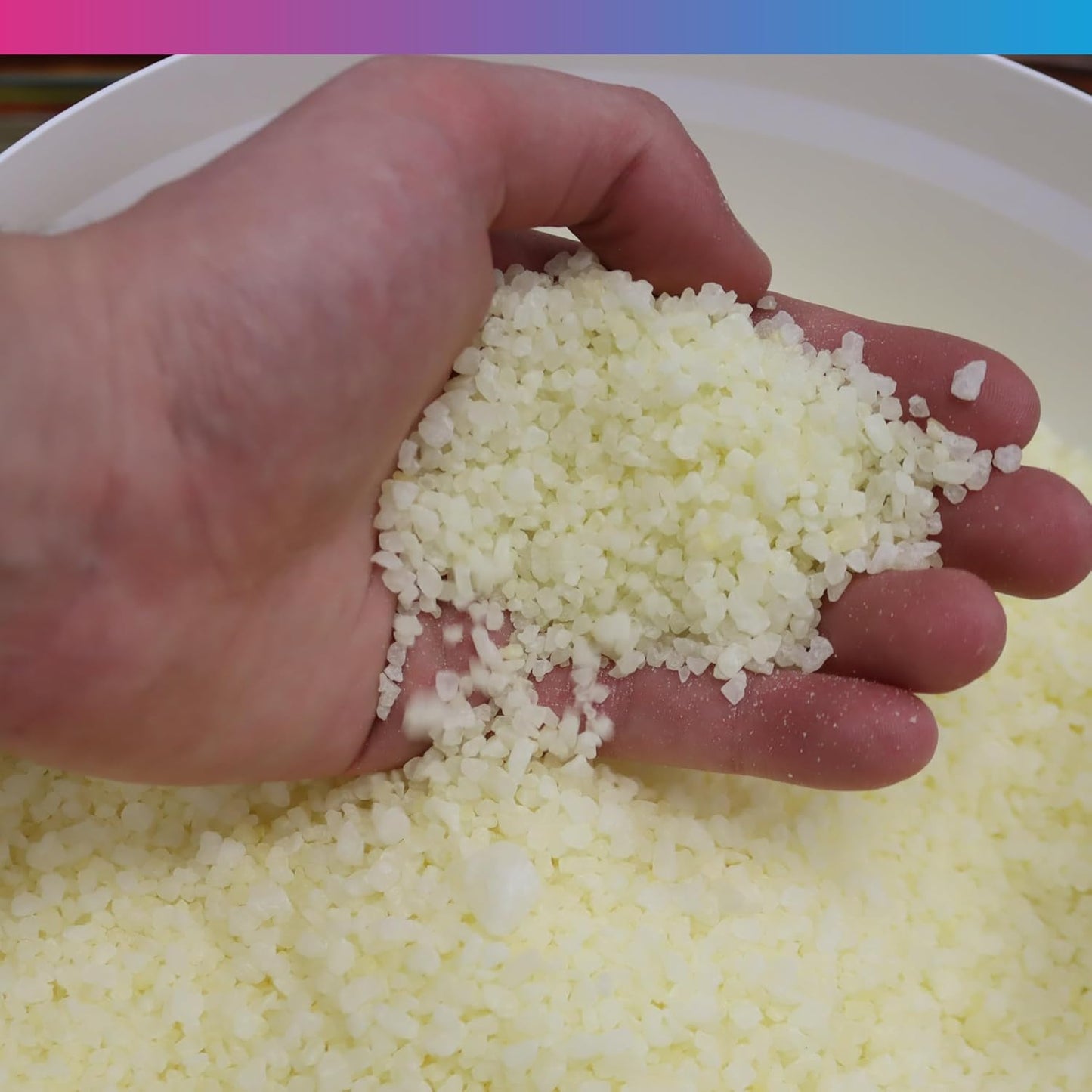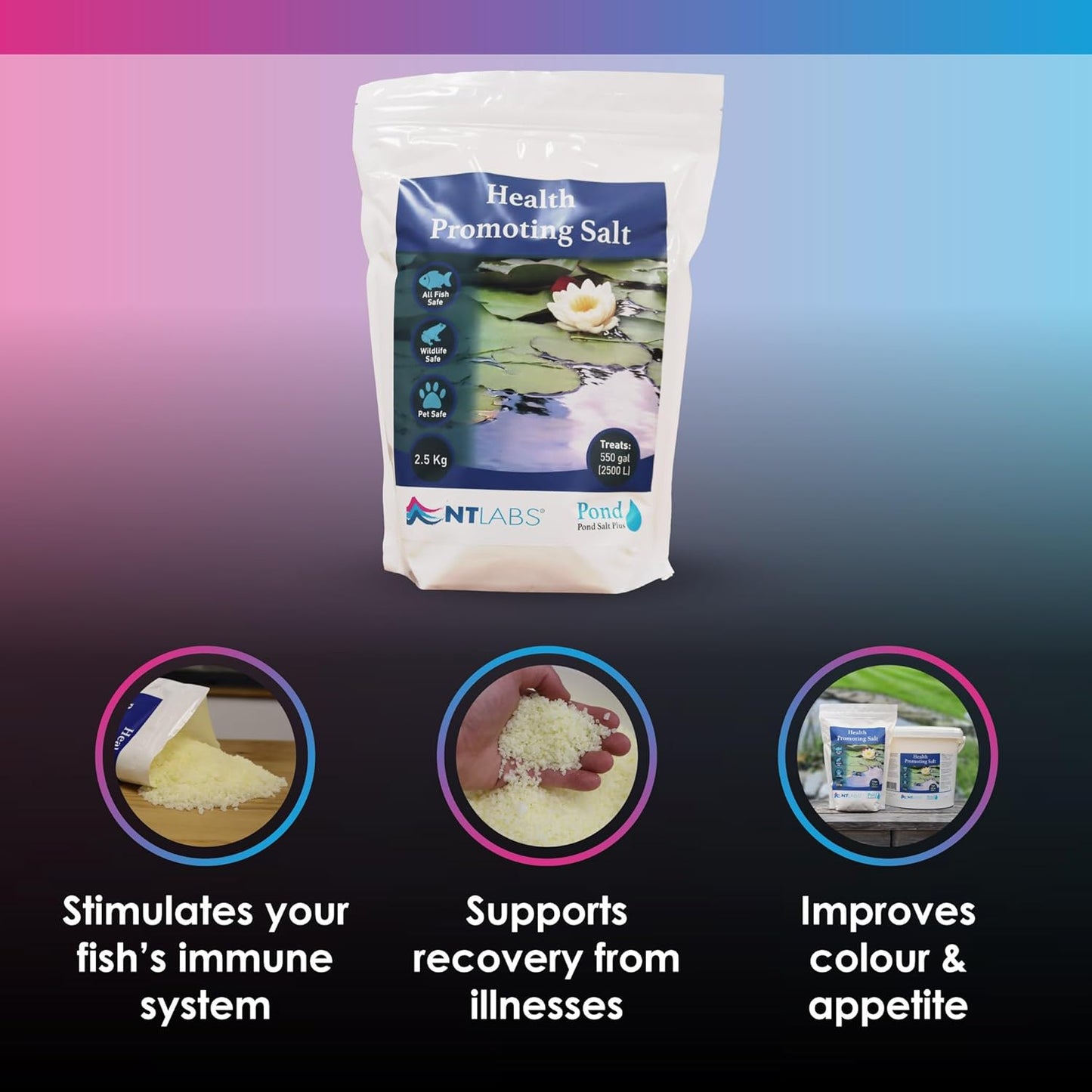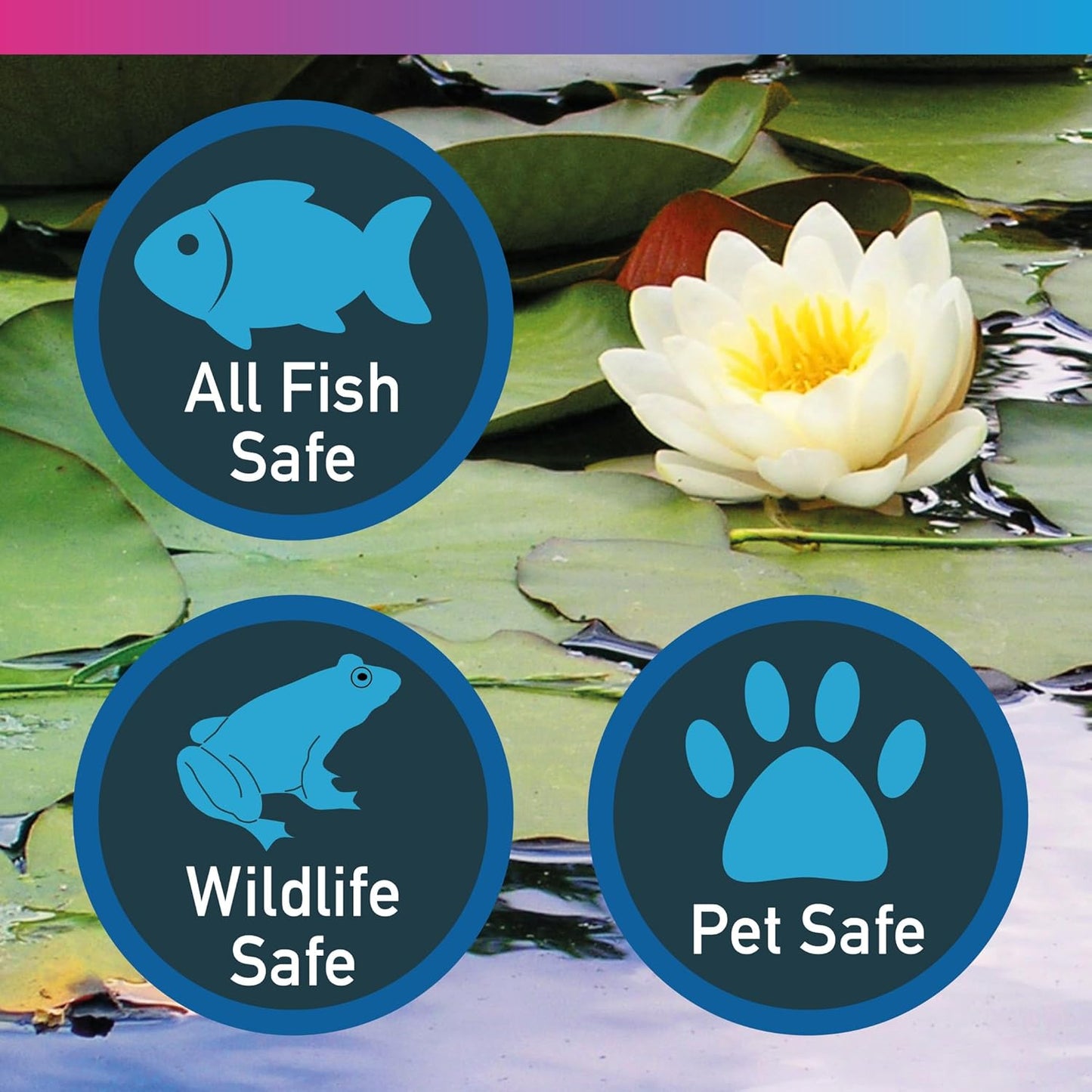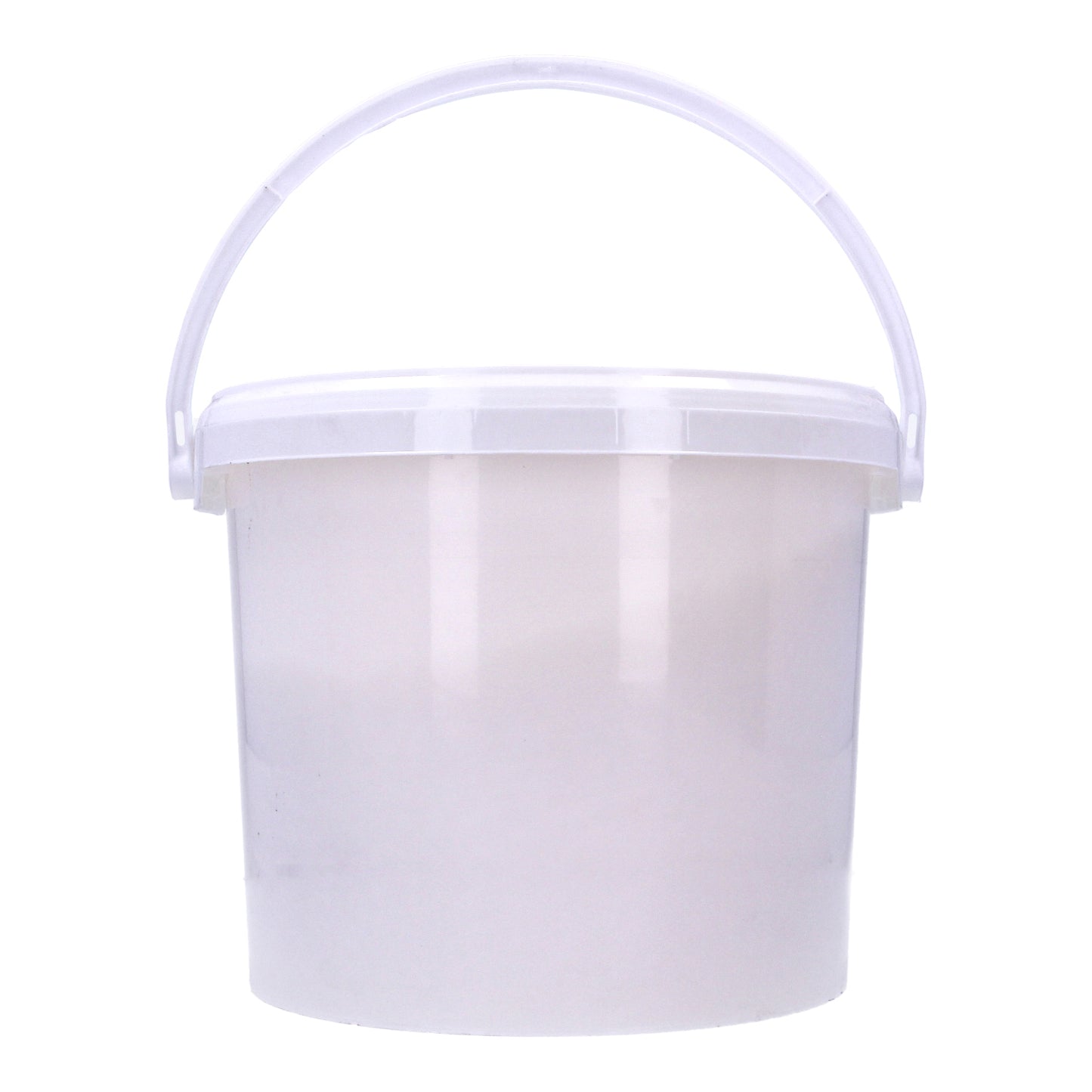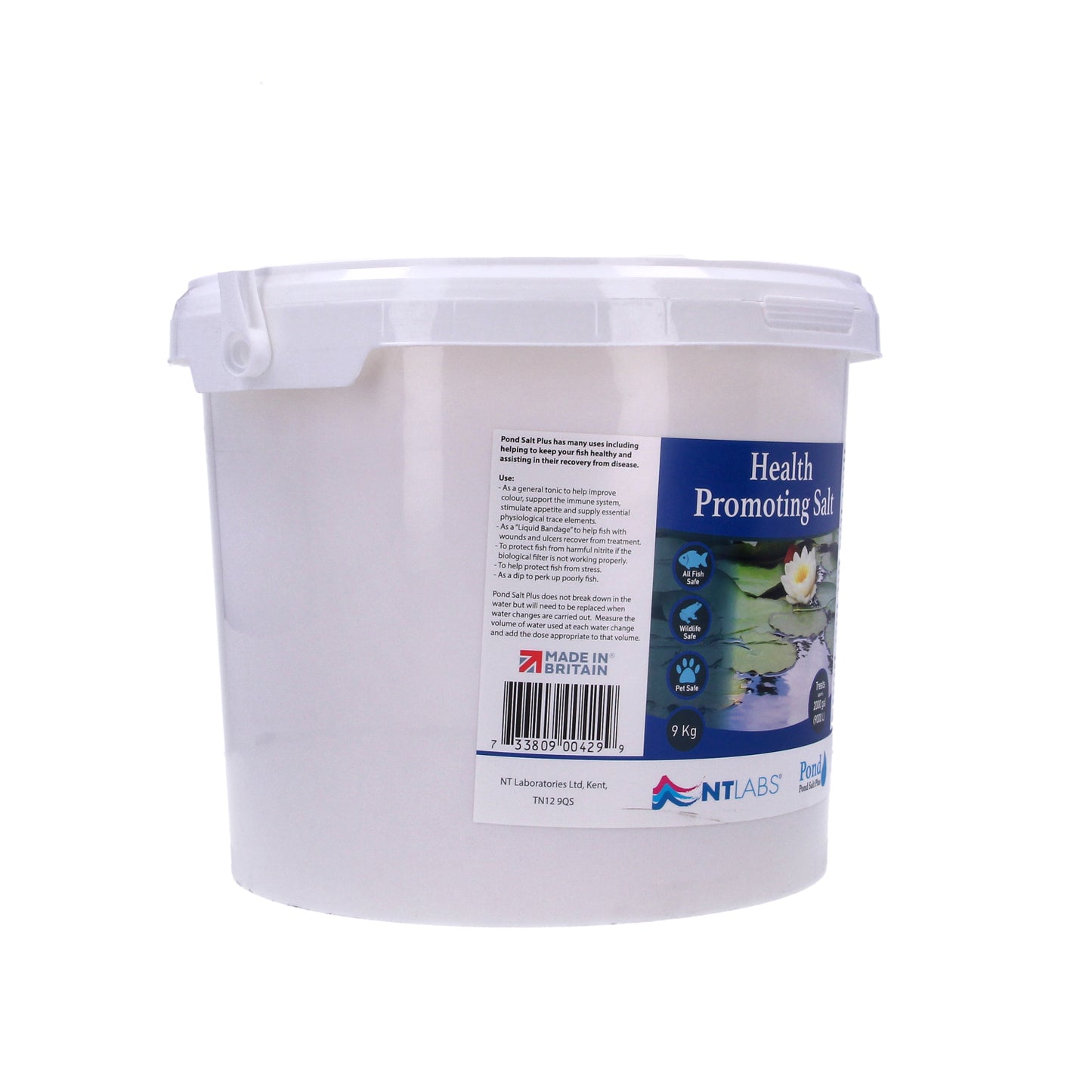Description
Description
NT Labs Pond Salt – Comprehensive Pond Treatment
NT Labs Pond Salt is a versatile and beneficial treatment for Koi ponds, offering a range of advantages for fish health, parasite control, and water quality improvement. With options to suit various pond sizes, this salt provides a reliable way to enhance the wellbeing of your aquatic environment.
Key Features:
- Boosts Fish Health: Helps relieve stress, supports osmoregulation, and promotes healing in sick or stressed fish.
- Parasite Control: Effective against a variety of parasites, with different concentrations suited to various treatment needs.
- Supports Recovery: Encourages mucus production to protect against infections, especially during winter or illness.
- Improves Water Quality: Reduces the harmful effects of ammonia and nitrite toxicity, enhancing the overall pond environment.
- Versatile Use: Suitable for long-term mild treatments or short-term dips, depending on the fish’s condition.
Available Sizes and Coverage:
- 2.5kg Bag: Treats ponds up to 625 gallons.
- 9kg Bucket: Treats ponds up to 2,500 gallons.
Why Use NT Labs Pond Salt?
- Assists in osmoregulation by balancing the natural movement of salts and water in fish.
- Protects against parasite infestations with varying treatment levels.
- Provides relief for fish with damaged skin, missing scales, or ulcers by promoting healing and preventing water accumulation at wounds.
- Essential during filter malfunctions to minimise ammonia and nitrite toxicity.
How It Works:
NT Labs Pond Salt works through osmosis and diffusion to balance solute concentrations in the water. This reduces stress on fish by decreasing water influx and salt loss, supporting their natural osmoregulatory processes. It also helps kill parasites by creating a hypertonic environment that causes osmotic water loss and direct toxicity.
Usage Note:
Follow recommended dosage guidelines for long-term or short-term treatments to ensure safe and effective use.
Reviews
Reviews
Finance
Finance
Aquacadabra acts as credit broker/intermediary and not as a lender.
Klarna's credit products are provided by Klarna Bank AB, which is authorised and regulated by the Swedish Financial Services Authority, with limited supervision by the Financial Conduct Authority. More information can be found here.
Newpay finance options are provided through Deko’s platform by NewDay. P.D. Aquatics Ltd, t/a Aquacadabra is an Introducer Appointed Representative of Pay4Later Ltd, t/a Deko, which is authorised and regulated by the Financial Conduct Authority (ref no 728646) and is a credit broker, not a lender. NewDay Ltd is authorised and regulated by the Financial Conduct Authority (ref no 690292) and is authorised by the Financial Conduct Authority under the Payment Services Regulations 2017 for the provision of payment services (ref no 555318). More information can be found by clicking the newpay option above, or in the Newpay FAQs.
Delivery & Returns
Delivery & Returns
We really want you to be happy with the product that you've received. If however, when the goods arrive they're not what you want, then no problem - we have a 60 day no quibble return guarantee. Just let us know that you're going to return the item(s) by contacting us(stating your Order Number) and complete the returns packing slip that will have been included with your delivery. This will help us to quickly identify the item that you have returned (unopened and unused) - and we'll put a refund through for you.
NT Labs Pond Heal Promoting Salt Plus
NT Labs Pond Heal Promoting Salt Plus
NT Labs Pond Salt is available in a number of sizes
Couldn't load pickup availability
Finance Options Choose pay monthly or pay later at checkout
Description
Description
NT Labs Pond Salt – Comprehensive Pond Treatment
NT Labs Pond Salt is a versatile and beneficial treatment for Koi ponds, offering a range of advantages for fish health, parasite control, and water quality improvement. With options to suit various pond sizes, this salt provides a reliable way to enhance the wellbeing of your aquatic environment.
Key Features:
- Boosts Fish Health: Helps relieve stress, supports osmoregulation, and promotes healing in sick or stressed fish.
- Parasite Control: Effective against a variety of parasites, with different concentrations suited to various treatment needs.
- Supports Recovery: Encourages mucus production to protect against infections, especially during winter or illness.
- Improves Water Quality: Reduces the harmful effects of ammonia and nitrite toxicity, enhancing the overall pond environment.
- Versatile Use: Suitable for long-term mild treatments or short-term dips, depending on the fish’s condition.
Available Sizes and Coverage:
- 2.5kg Bag: Treats ponds up to 625 gallons.
- 9kg Bucket: Treats ponds up to 2,500 gallons.
Why Use NT Labs Pond Salt?
- Assists in osmoregulation by balancing the natural movement of salts and water in fish.
- Protects against parasite infestations with varying treatment levels.
- Provides relief for fish with damaged skin, missing scales, or ulcers by promoting healing and preventing water accumulation at wounds.
- Essential during filter malfunctions to minimise ammonia and nitrite toxicity.
How It Works:
NT Labs Pond Salt works through osmosis and diffusion to balance solute concentrations in the water. This reduces stress on fish by decreasing water influx and salt loss, supporting their natural osmoregulatory processes. It also helps kill parasites by creating a hypertonic environment that causes osmotic water loss and direct toxicity.
Usage Note:
Follow recommended dosage guidelines for long-term or short-term treatments to ensure safe and effective use.
Reviews
Reviews
Finance
Finance
Aquacadabra acts as credit broker/intermediary and not as a lender.
Klarna's credit products are provided by Klarna Bank AB, which is authorised and regulated by the Swedish Financial Services Authority, with limited supervision by the Financial Conduct Authority. More information can be found here.
Newpay finance options are provided through Deko’s platform by NewDay. P.D. Aquatics Ltd, t/a Aquacadabra is an Introducer Appointed Representative of Pay4Later Ltd, t/a Deko, which is authorised and regulated by the Financial Conduct Authority (ref no 728646) and is a credit broker, not a lender. NewDay Ltd is authorised and regulated by the Financial Conduct Authority (ref no 690292) and is authorised by the Financial Conduct Authority under the Payment Services Regulations 2017 for the provision of payment services (ref no 555318). More information can be found by clicking the newpay option above, or in the Newpay FAQs.
Delivery & Returns
Delivery & Returns
We really want you to be happy with the product that you've received. If however, when the goods arrive they're not what you want, then no problem - we have a 60 day no quibble return guarantee. Just let us know that you're going to return the item(s) by contacting us(stating your Order Number) and complete the returns packing slip that will have been included with your delivery. This will help us to quickly identify the item that you have returned (unopened and unused) - and we'll put a refund through for you.
Couldn't load pickup availability


